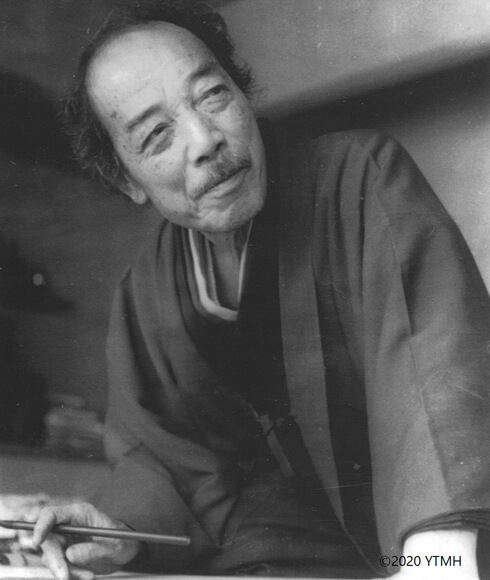About Yokoyama Taikan

About Yokoyama Taikan
Taikan, who looked up to Okakura Tenshin as his mentor and lived for 90 years during the Meiji, Taisho and Showa eras, lived by the motto “All art is nothing but the pursuit of eternity, and art is the expression of the world’s best sentiments, mainly through emotions.”
He moved to Tokyo with his father, who lost his status as a member of the Mito clan after the Meiji Restoration, and graduated from Yushima Elementary School and Tokyo Fuchu School (now Hibiya High School).
In 1885, he was rejected from the University of Tokyo’s Preparatory Department and its affiliated English Specialized Course for violating the university’s bylaws, so he enrolled in the private Tokyo English School and studied there for four years. The language skills he learned at this school helped the artist Taikan greatly in his later years.
In 1889, he entered the Tokyo Fine Arts School (now Tokyo University of the Arts) as a first-year student, and after graduation, he became an assistant professor at the school.
In 1898, he joined Tenshin, who had resigned as principal, and others in founding the Japan Art Institute in Yanaka.
Although his “Moro-tai” is highly acclaimed today, at first it was different from the previous style of Japanese painting and was ridiculed as vague and fuzzy and not accepted by the public. Taikan and Shunso therefore traveled abroad together.
In 1903, Taikan held exhibitions in Calcutta, India, and from 1905 to 1905, in New York, Boston, London, Berlin and Paris, where his work was highly acclaimed. After returning to Japan, he moved to Itsuura, Ibaraki, but returned to Tokyo a year and a half later. He moved to Kayacho, Shimotani-ku (the present location of the Yokoyama Taikan Memorial Hall, Taito-ku) in 1908.
His painting style was highly acclaimed abroad, and around this time his style began to be recognized in Japan as well.
He continued to work energetically on his paintings here until his death, and was a leader in the Japanese art world, including serving as an envoy to the Japan Art Exhibition in Rome in 1930. He was awarded the first Order of Culture in 1937. He died here in 1958.
Taikan’s long-standing contributions to the development of Japanese art bestowed upon him the rank of Shosanmi (Senior third), and he was awarded Grand Cordon of the Order of the Rising Sun, the First Order of Merit.
There are many representative works, including “Metempsychosis,” “Mt. Fuji with Cranes in Flight,” “Cherry Blossoms at Night,” “A Day in the Pacific Ocean” and others.